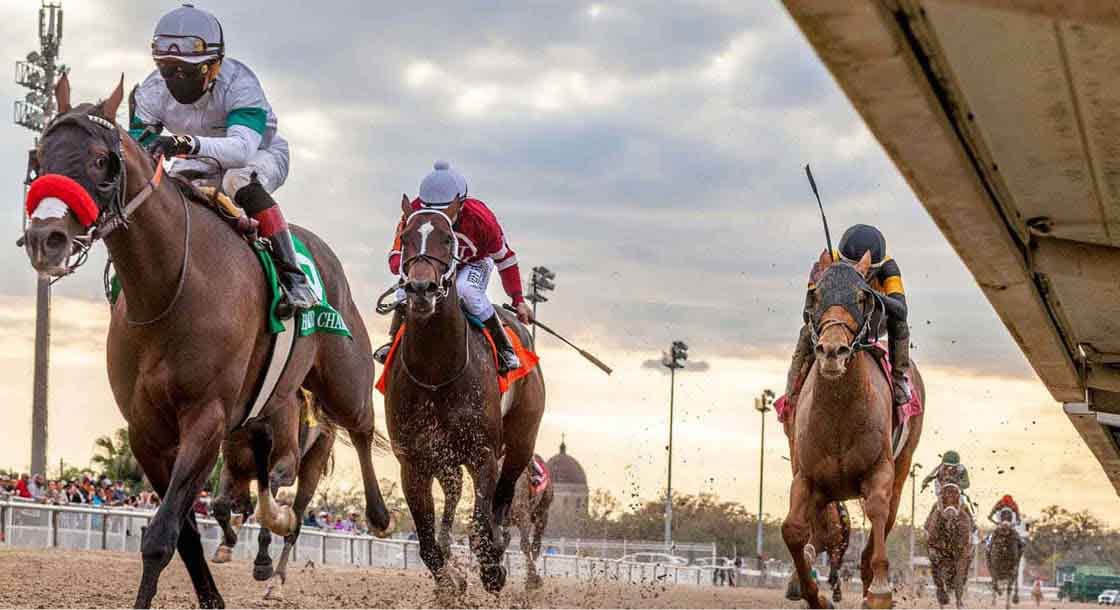The walls are going up in American racing after Louisiana went it alone on a more relaxed approach to the medication of thoroughbreds and it is an important lesson for an Australian industry increasingly divided along state lines, writes Bren O’Brien.

Analysis: The United States has long held a reputation for being more permissive when it comes to how racehorses are medicated and treated.
The most high-profile example for a long time was the difference when it came to raceday use of Lasix, or furosemide, the diuretic that acts as a preventative measure for bleeding.
However, widespread use of that drug has been phased out, with that gradual ban now led by the federally created Horseracing Integrity and Safety Authority (HISA). Bloodhorse reported that while in 2017, 90 per cent of two-year-olds in the United States raced with Lasix, that dropped to just 32 per cent four years later.
The major tracks in the United States led the way in this reform. In graded stakes, 89 per cent of starters in 2021 were without Lasix, compared with just 2 per cent in 2017.
This change in the culture of treating horses with Lasix corresponded with a much greater level of public scrutiny of the treatment of racehorses in the American thoroughbred industry.
A series of highly publicised drug scandals and a rash of racehorse fatalities at major meetings has created a significant threat to the sport’s social licence, especially in places such as California.
HISA was created because of this concern. Founded in 2020, it has a federally backed remit to propose and enforce regulations related to safety and anti-doping aspects of the sport. It began operating in 2021, and its anti-doping and enforcement rules began in May 2023.
Predictably, its establishment ruffled the feathers of the states and their racing bodies. Two states, West Virginia and Louisiana, have active legal challenges to HISA’s authority. State-based rules persist in those states until those legal challenges are resolved.
Last week, the Louisiana State Racing Commission threw somewhat of a Molotov cocktail into the debate over doping in racing by introducing its ‘Active Emergency Rules of Racing’, to come into effect on June 8.
These emergency rules raised allowable dosage levels and reduced withdrawal times on a host of medications. The two most notable of these substances were the bronchodilator Clenbuterol and corticosteroid Depo-Medrol.
“The rules were changed to allow trainers to train their horses and veterinarians to treat their horses in a way they felt would increase safety,” the Commission's Executive Director Stephen Landry told the TDN at the time.
The safety argument - which had been repeatedly used for Lasix - was that these substances can act as a preventative measure against injury or illness. Interestingly, the rate of bleeding and horses not finishing races has not changed as its use was reduced.
However, the more liberal policies could also lead to injuries being masked and have been viewed as potentially performance-enhancing.
The decision has been widely viewed as a challenge to HISA's broader plans to reduce the amount of medication used in American racing. Liberalising the use of Clenbuterol and the corticosteroid Depo-Medrol was seen as particularly provocative.

Just this week, the Louisiana Racing Commission confirmed it had a change of heart about those two substances. It would roll back its changes regarding Clenbuterol and Depo-Medrol before their introduction this Saturday; however, its stance on a host of other substances remained unchanged.
The ball was back in HISA’s court and they opted for an overhead smash in their response.
It sent a memo to owners, trainers, regulatory veterinarians, and track management advising that horses coming out of Louisiana must be placed on the vets' list.
What that means is that any horse shipping to another track from Louisiana will be considered “medically compromised and unfit to race”.
For a horse to be cleared to race, it will have to perform a workout under the supervision of the regulatory veterinarian and until a blood sample is collected from the horse at the owner's expense.
“HISA has reviewed the Emergency Rule and HISA's Veterinary Team has determined that it poses significant risks to both equine welfare and the integrity of Thoroughbred racing,” the latest statement says.
“Some of the changes contemplated in the Emergency Rule contradict the weight of scientific evidence and long-established industry standards for medication controls.”
It said they were just two of the many serious concerns it had about the new Louisiana rules.
In short, battle lines have been drawn here, quite literally, around the Louisiana state borders. There is now an embargo on all horses coming out of the state.
The decision by HISA has forced a second emergeny meeting by the Louisiana Racing Commission in a week to be held Friday (Saturday AEST).
Louisiana is a relatively small racing state, with four racetracks, the most notable being Fair Grounds, but the state versus federal battle does have resonance not only in the United States but also in Australia.
Australia operates under the Racing Australia-compiled Australian Rules of Racing, but under a state-based system of Principal Racing Authorities that administer those rules under the auspices of the state racing minister.
State-based differences of opinion on the dosage and withdrawal times of medications are relatively common. In 2018, Racing Victoria caused a major rift when it advised that altrenogest, used to control fertility in fillies and mares, could return a positive for the steroids and it would not have cause for discretion.
Racing NSW then introduced a local law allowing discretion in a positive sample. It created a situation where a mare or filly in one state could be treated with altrenogest with assurances and not in another.
It also highlights the opportunity for certain states to make local laws, and allowances, which are not consistent across jurisdictions.
A situation like we are currently seeing in Louisiana is not beyond the realms of possibility,
The difference in the circumstances is that in the United States, you have HISA attempting to assert federal control, with federal legislation, where previously that did not exist.
In Australia, RA has been constituted to form and develop the Australian rules of racing, but with no federal government oversight or involvement. As has been seen in many other areas, including race programming and The Pattern, it is subject to the politics of its state-based stakeholders.
Its function has been put under substantial pressure by the increasingly powerful and well-resourced PRAs, some of whom have stated intent to pursue their own interests.
If one of those states decided to ignore ongoing scientific and veterinarian research and go it alone on how permissive it may be on medication and treatment of horses, what structure is there to legitimately stop them?

There certainly does not seem to be a spirit of cooperation between the major racing states in Australia at the moment.
The culture of American and Australian racing do have many differences, especially when it comes to how horses are medicated, but a broader common challenge exists when it comes to the legitimacy of the industry in the social context.
Treatment of those athletes at the heart of the industry, whether it be medication or overall welfare, is crucial to the thoroughbred industry retaining that faith.








